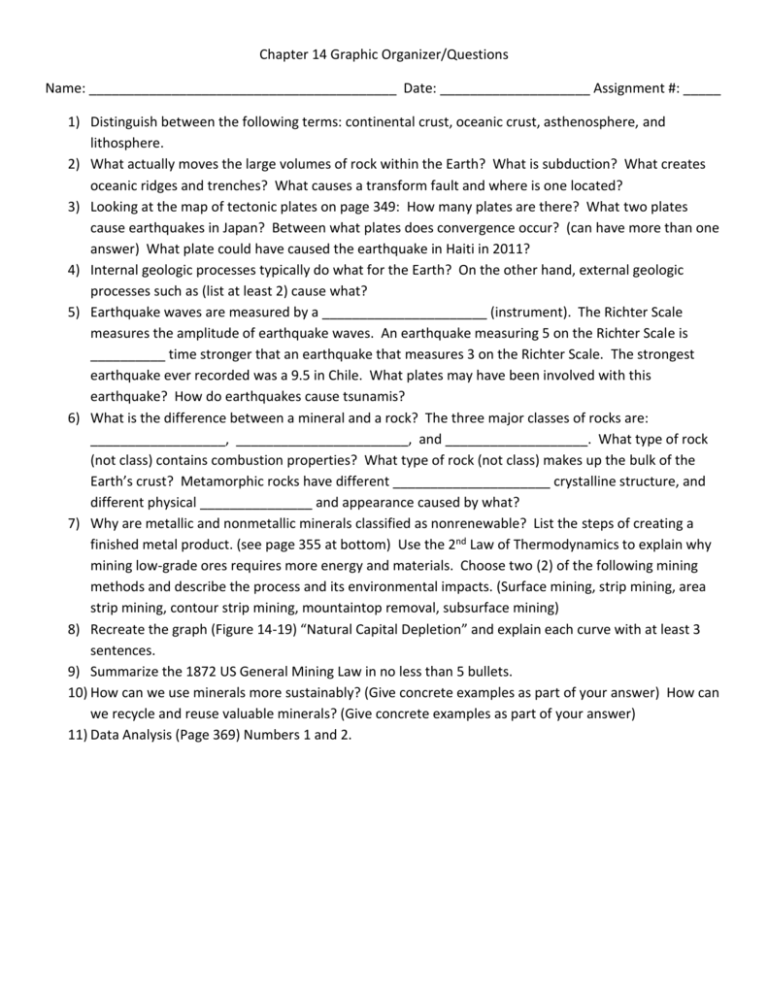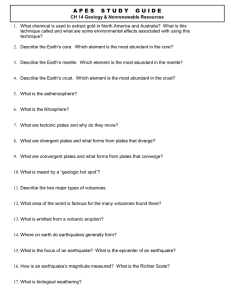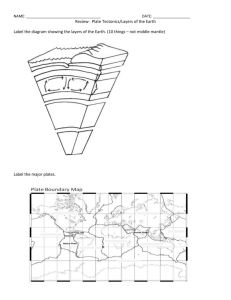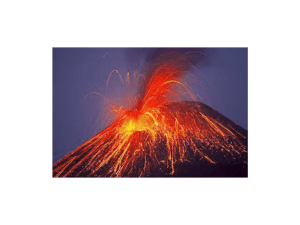Chapter 14 Graphic Organizer
advertisement

Chapter 14 Graphic Organizer/Questions Name: _________________________________________ Date: ____________________ Assignment #: _____ 1) Distinguish between the following terms: continental crust, oceanic crust, asthenosphere, and lithosphere. 2) What actually moves the large volumes of rock within the Earth? What is subduction? What creates oceanic ridges and trenches? What causes a transform fault and where is one located? 3) Looking at the map of tectonic plates on page 349: How many plates are there? What two plates cause earthquakes in Japan? Between what plates does convergence occur? (can have more than one answer) What plate could have caused the earthquake in Haiti in 2011? 4) Internal geologic processes typically do what for the Earth? On the other hand, external geologic processes such as (list at least 2) cause what? 5) Earthquake waves are measured by a ______________________ (instrument). The Richter Scale measures the amplitude of earthquake waves. An earthquake measuring 5 on the Richter Scale is __________ time stronger that an earthquake that measures 3 on the Richter Scale. The strongest earthquake ever recorded was a 9.5 in Chile. What plates may have been involved with this earthquake? How do earthquakes cause tsunamis? 6) What is the difference between a mineral and a rock? The three major classes of rocks are: __________________, _______________________, and ___________________. What type of rock (not class) contains combustion properties? What type of rock (not class) makes up the bulk of the Earth’s crust? Metamorphic rocks have different _____________________ crystalline structure, and different physical _______________ and appearance caused by what? 7) Why are metallic and nonmetallic minerals classified as nonrenewable? List the steps of creating a finished metal product. (see page 355 at bottom) Use the 2nd Law of Thermodynamics to explain why mining low-grade ores requires more energy and materials. Choose two (2) of the following mining methods and describe the process and its environmental impacts. (Surface mining, strip mining, area strip mining, contour strip mining, mountaintop removal, subsurface mining) 8) Recreate the graph (Figure 14-19) “Natural Capital Depletion” and explain each curve with at least 3 sentences. 9) Summarize the 1872 US General Mining Law in no less than 5 bullets. 10) How can we use minerals more sustainably? (Give concrete examples as part of your answer) How can we recycle and reuse valuable minerals? (Give concrete examples as part of your answer) 11) Data Analysis (Page 369) Numbers 1 and 2.









